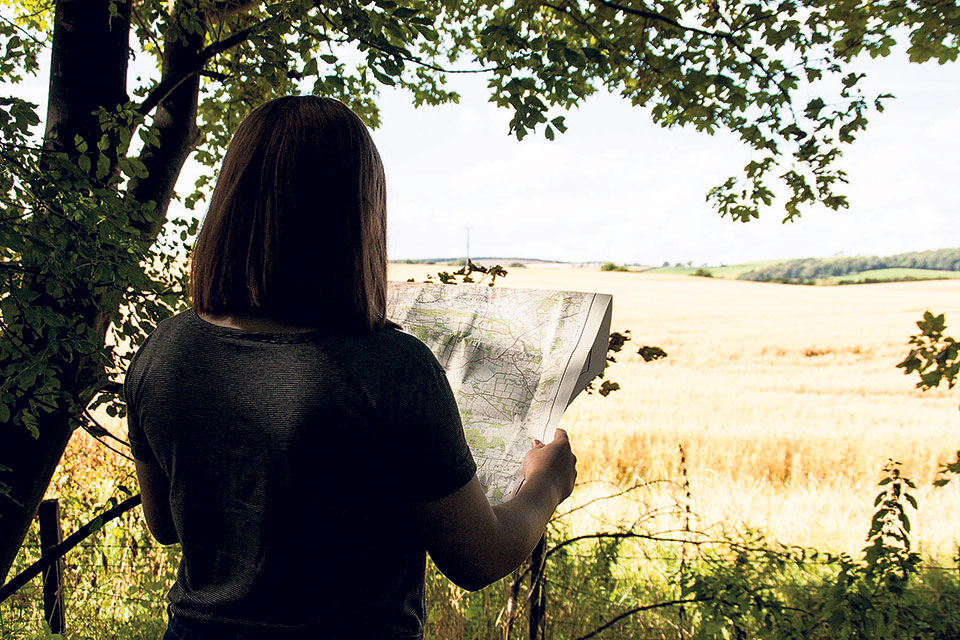
OR

Whether it’s exploring a new city or just going from one place to another within your own hometown, navigation can sometimes be very daunting and tricky. More so for us directionally challenged individuals who manage to mess up even the simplest of instructions.
So, this week we bring you a guide to navigation so that you will not get lost the next time you head out to an unknown destination.
Maps and GPS
Maps and GPS should honestly be your best friends for you to be able to navigate places better. Although you might feel like you can reach just about anywhere with the help of the map app on your phone, it’s better to carry a physical map of the area along with you. As advanced as today’s GPS systems are, sometimes they can be quite hard to navigate. Also, you are doomed if your only source of navigation is your GPS system and the internet service on your phone stops working.
A GPS map is quite personalized and puts you at the center by default. You will not have to remember the sequence of places because Google Maps will tailor your map exactly from the place you are in to the place you are supposed to go. And although this is quite effective, easier, and quicker at the time you need it, you will not remember the route the next time you have to go there. But with a traditional map you will understand the area better since it gives you a thorough look into places and you will have to manually search for your destination. It’s also not centered around you or your navigation needs which will help you get a better grasp of where everything is situated.
GPS apps are also very helpful for navigation. Although we touched on how centering your own navigation needs can be a bad thing earlier, it can also be a good thing. It saves you time, you will not have to carry extra papers to locate places and it is – in most cases – more effective than a traditional map since it gives you a detailed description of localities including the alleyways and the smallest of shops and organizations. Also, if you are actually traveling and your visit to a certain destination is a one-time thing only, you don’t really need to remember the routes you took to get there.
Understand how the public transportation works
This a very important step but one that most people skip. If you truly want to navigate a city better and know how to reach different localities in it faster then you need to know how the public transportation works – especially if you do not have your personal means of transportation. If you search thoroughly, you might get some pointers on how the public transportation of a place works on the internet. But you have to get in buses, trains, and any other means of public transport available to fully understand how it works. You will take a wrong bus route, not know how the payment for the ride works, and face similar problems in public transportation all at least once. And it’s better to figure it all out as soon as you get to a new destination so that you will not get late later on when you have to catch up on appointments. Additionally, this step also helps you know the road and traffic rules of that area better.
Navigating through nature
We have the luxury of depending on materialistic things for better navigation that our ancestors did not. But that did not stop them from traveling long distances. They used some clever tricks and hacks to steer themselves through unknown territory which can come in handy for us too in case things like GPS and maps are not accessible to us at the time we need them.
The first of these hacks is analyzing the directions through sunrise and sunsets. We all know that the sun rises in the east and sets in the west. But did you know that if you face east, then your left perpendicular side is north. This small information can help you a lot. You can figure out the same information by watching the rise and set of the moon too.
You can also find true north if you can locate the North Star in the sky. If you follow the two stars on the side edge of the Big Dipper or Ursa Major’s cup, you will find a dim star near it. That is the North Star or Polaris. The side opposite to north is south, the one on its perpendicular left is west, and the side on its perpendicular right is east.
Even the storms can give you a general idea of direction. Usually, wind blows from west to east. If you notice it properly, you will realize that every time you see a dark cloud stirring, it is almost always on your west. And oftentimes, trees, shrubs and other lighter vegetation always face away from the direction of the incoming storm.
You May Like This

TU seeks applications for campus merger by mid-July
KATHMANDU, June 13: Tribhuvan University (TU) has sought applications from the campuses that wish to opt for a merger. ... Read More...

Modi assures inland water navigation, Oli calls ‘intertwined destiny’
KATHMANDU, April 7: Prime Minister KP Sharma Oli and Narendra Modi have agreed to assist one another for economic prosperity... Read More...

Nepal police invites applications for 75,000 temporary police
KATHMANDU, March 25: Nepal police has invited applications for 75,000 temporary police targeting the upcoming local level elections scheduled to take... Read More...





Just In
- CM Kandel requests Finance Minister Pun to put Karnali province in priority in upcoming budget
- Australia reduces TR visa age limit and duration as it implements stricter regulations for foreign students
- Govt aims to surpass Rs 10 trillion GDP mark in next five years
- Govt appoints 77 Liaison Officers for mountain climbing management for spring season
- EC decides to permit public vehicles to operate freely on day of by-election
- Fugitive arrested after 26 years
- Indian Potash Ltd secures contract to bring 30,000 tons of urea within 107 days
- CAN adds four players to squad for T20 series against West Indies 'A'













Leave A Comment